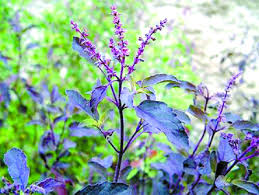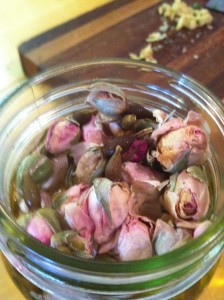After my first born, I didn’t
Birth is so empowering, lifechanging, and I’m deeply grateful Mother Nature and my husband made me a mother, in spite of the fatigue, loss of sleep, mush mind, health issues and the colic that developed for I don’t even remember how long. I loved my baby, loved being able to give birth naturally in spite of the hospital mismanagements and my foolish idea I should walk right after birth, and loved nursing even though I had no idea how to burp my baby at first. I nursed him for 2 1/2 years.
In addition to the side benefits of no more cold hands and feet, I felt like I had been initiated into the family of humankind. My emotions were more true and available. I even discovered how to get my twice daily meditations in – with him falling asleep in my arms. That was probably my saving grace – the deep transcendental dive that was so integrating for all other layers of my being, even when much of the time I was what we call “sleepitating”.
But more than sometimes he didn’t sleep when he needed to and was unhappy, uncomfortable — inconsolable — and we had to do crazy things like walking him in our coastal fog, or taking him for a drive at all hours in the car, hoping he would stay asleep once we got home. I got really good at sliding the complex “Snuggly” off and keeping him asleep, but still spent lots of time in the rocking chair, with lots of tummy issues for us both, and my nipples cracked and bled. I got lucky and learned about good old fashioned sunshine-delivered Vitamin D and they healed. I blamed myself for his discomfort though, figuring I was just not loving or tuned in enough, and spent the time I needed for self care with extra baby care needs. I did get sick. It was all a mixed bag. It’s probably a familiar story.
I didn’t have enough presence of mind or knowledge of what help to ask for; my mind was mushy and my health funky for about 2.5 years. My transverse colon fascia didn’t hold when I walked down the hall a few minutes after his birth. That part of my colon suddenly fell 3-4 inches, and stayed mal-positioned adding to other constipation factors for many years. My husband didn’t understand my fragile condition (neither did I) and expected me to be a housewife like I always was. I decided and accepted this was part of the price of having babies which no-one wanted to tell me about. I know that for most mamas, along with the blessings of motherhood, lots of ageing begins during this sacred window.
Ayurvedics know the word “kavaigunya” or weak area, where the doshas will be easily able to settle in and accumulate. We have multiple kavaigunyas after childbirth, which can affect us for many years to come if not addressed early on. Fortunately, Ayurveda also has multiple ways, better than any other system of medicine indigenous, alternative or allopathic, to reverse these things, but advanced practitioners are hereby on the alert to take a good history and understand, these things can go deep at this very open time.
OK – that birth story was 41 years ago. Looking back, I can see some help would have made a different life for us all – even if I just had some understanding, given our low budget at the time — some wise-woman guidance, even something to listen to or read. I would gladly have worn a belly wrap, protecting my abdominal organ position, function, and posture. I would have used the handbook and cookbook so religiously (which is often the way for first-time mamas!) and made the simple, inexpensive herbal teas for his comfort and mine – tummy, mood and rejuvenation. Avoiding salad and pinto beans alone would have made a big difference on our comfort! Insights for diet and lifestyle nourish hormones, mind and mood, and my relationship with my husband would have been so much better if we both had understood my short term needs (those first 6 weeks), for years to come.
So this is hindsight, like I said, with acceptance and gratitude for what was, and why I finally began to ask for help with my second and third babies. That was the mid 1970s. I was called to the AyuDoula work for myself as a mother, and then as a profession, after my third live birth in 1987. Ayurvedic postnatal care began to shine its gifts on the west thanks to the blessings of an enlightened monk, Maharishi Mahesh Yogi, when two of his student’s (medical doctors, running the Ayurvedic clinic at the time) were both expecting their first babies. (Ok, their wives were expecting). The thrill that ran through the grapevine as mothers began to experience it was full of a bright light of right-for-so-many. I knew I wanted it.
That’s just part of why I’ve dedicated my life to this work. With the Baby’s Best Beginnings program, I could have done a lot for myself, and I know we would have managed somehow to get a little direct guidance or hands on help. We would have known how to ask our community for help. I would have known how to prevent and reverse the colic – that is big! and have a much brighter consciousness and more loving support for my husband those years. He needed it too, and his health and patience wore thin. That too is very big.
Our lives would have been so different – whether this guidance and help had came from an AyuDoula, girlfriend, or doctor. Yes, there is karma. And there is choice on what level we experience it, and the healing and health care profession is dedicated to helping our safe experience and opportunity to live and grow in love and good health while we pay off our karmas and blossom on our paths to self realization.
If you want to help mothers and babies who want to help make this world a happier place starting with the beginning of life, you can start learning at the very low prices we offer for our webinars.
Enjoy, and wishing you many insights, many blessings on this journey.


 Tulsi is anti-stress, and an adaptogen with special serotonin enhancing and sattvic gifts for mama and baby — qualities which naturally improve the mood and sense of well-being. Tulsi is less heavy to digest than many of the manas herbs, which makes it more helpful when kapha is high in the early springtime. The herb part used is usually the leaf. White or black tulsi beads are often worn to strengthen devotion and sattva as well.
Tulsi is anti-stress, and an adaptogen with special serotonin enhancing and sattvic gifts for mama and baby — qualities which naturally improve the mood and sense of well-being. Tulsi is less heavy to digest than many of the manas herbs, which makes it more helpful when kapha is high in the early springtime. The herb part used is usually the leaf. White or black tulsi beads are often worn to strengthen devotion and sattva as well.  Personified in Vedic tradition, Tulsi has a very benefic feminine energy and is thought to have divine powers which provide spiritual protection. Whenever you take a herb that is rich in divine intelligence, like tulsi, it can help to remove vibrational blocks in your system and strengthen your auric field. Mothers and newborns are in a state of tremendous openness, physically and energetically. Often they have been around negative energies or hospital environments where – many things go on and can create complications on this level too. It is important to protect them at this time, and Tulsi can be a lovely friend indeed. During kapha season look to safe postpartum blood and liver cleansing herbs. Choose ones whose impact on vata is not going to create more vata. Remember that in a new mom, vata is already pushing the other existing doshic and mental issues out of balance and you don’t want add to it by recommending an inappropriate herbal combination. Appropriate herbs may include guduchi, bringaraj, anantamool, and turmeric, with warming balance from such herbs as pippali or ginger.
Personified in Vedic tradition, Tulsi has a very benefic feminine energy and is thought to have divine powers which provide spiritual protection. Whenever you take a herb that is rich in divine intelligence, like tulsi, it can help to remove vibrational blocks in your system and strengthen your auric field. Mothers and newborns are in a state of tremendous openness, physically and energetically. Often they have been around negative energies or hospital environments where – many things go on and can create complications on this level too. It is important to protect them at this time, and Tulsi can be a lovely friend indeed. During kapha season look to safe postpartum blood and liver cleansing herbs. Choose ones whose impact on vata is not going to create more vata. Remember that in a new mom, vata is already pushing the other existing doshic and mental issues out of balance and you don’t want add to it by recommending an inappropriate herbal combination. Appropriate herbs may include guduchi, bringaraj, anantamool, and turmeric, with warming balance from such herbs as pippali or ginger.


